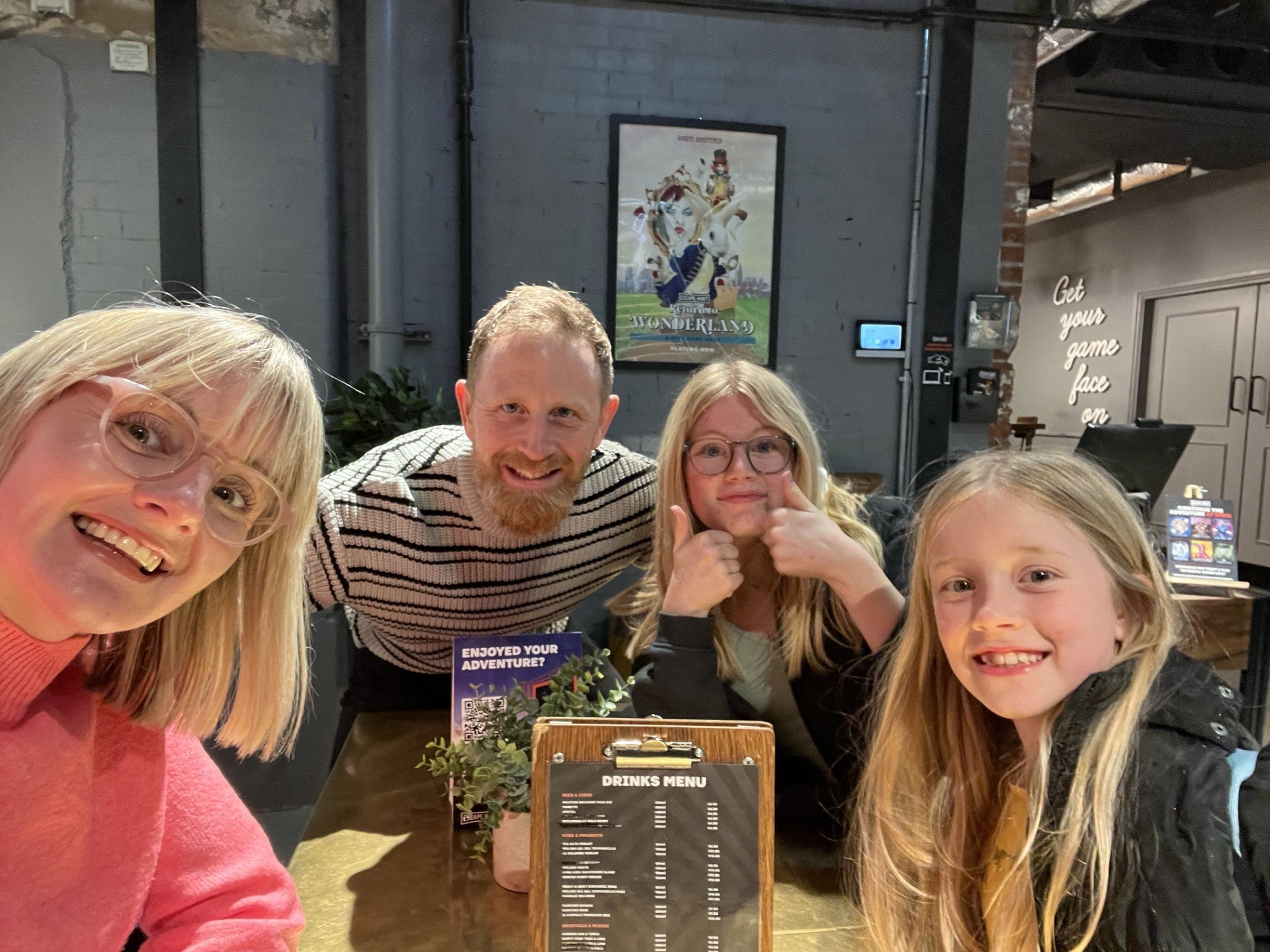Mother who lost ‘bright and bubbly’ daughter, 13, to suicide says schools and government must do more
Flossie Newson had begun to suffer anxiety about her friendships at school – Holly Evans speaks to her grieving family


Your support helps us to tell the story
From reproductive rights to climate change to Big Tech, The Independent is on the ground when the story is developing. Whether it's investigating the financials of Elon Musk's pro-Trump PAC or producing our latest documentary, 'The A Word', which shines a light on the American women fighting for reproductive rights, we know how important it is to parse out the facts from the messaging.
At such a critical moment in US history, we need reporters on the ground. Your donation allows us to keep sending journalists to speak to both sides of the story.
The Independent is trusted by Americans across the entire political spectrum. And unlike many other quality news outlets, we choose not to lock Americans out of our reporting and analysis with paywalls. We believe quality journalism should be available to everyone, paid for by those who can afford it.
Your support makes all the difference.“What I want to get across to parents, is that this could happen to anyone,” the mother of Florence Newson says.
It has been over a year since her 13-year-old daughter took her own life after a day at school, taking her family, school friends and teachers completely by surprise.
In the weeks before she died, Caroline Newson had noticed a change in her usually bright and bubbly daughter, who was known as Flossie. Yet while she was aware of her daughter’s anxiety over her friendships at school, nothing could have prepared her for how dramatic her mental health decline was.
“There were no signs to say this was going to escalate, and within a month she wouldn’t be here any more. It was a really fast escalation and it was really shocking,” she says over Zoom.
She is now calling for schools and the Labour government to take heed to parents’ warnings, and to ensure that children are taught about suicide, to prevent other families from enduring similar heartbreak.

Flossie is among the 200 schoolchildren who take their own life each year, according to figures released by the suicide prevention charity Papyrus, with her family believing that more could be done to raise awareness among schools and parents.
A YouGov survey among teachers also found that 10 per cent of participants had a student share suicidal thoughts with them at least once a term, with only half feeling confident they could provide adequate support.
For Caroline, her daughter had begun expressing anxiety over her friendships towards the end of primary school. After realising that she was feeling low during the evenings, her parents arranged for her to receive some help and she soon flourished after moving into secondary school.
“She enjoyed reinventing herself a bit – she went from being a bit nerdy to being in the popular group, and while she used to occasionally worry about results or what people thought of her, there was nothing that was abnormal.”
However, as she moved into Year 8, Flossie told her parents that she had begun to feel the pressure of keeping up with appearances.
“It also seemed to be social media, it was a big thing with maintaining her Snapchat streak,” Caroline said. “These kids seem to think that maintaining your Snapchat streak is more important than anything, and having spoken to her friends they’ve told me it’s more important than your schoolwork.”

The social media app Snapchat, which is popular among teenagers, has a streak counting how many consecutive days two people have been sending pictures to one another.
Just weeks before she died, her mother had noticed evidence of self-harming and became immediately concerned. After conducting research online, Caroline spoke to Flossie in the car on the way home from a football match, who told her: “I have to be fake all the time, I can’t be the real me.”
Her parents referred her to Child and Adolescent Mental Health Services (CAMHS), informed her school and sought private therapy, but were told due to waiting lists that they should call back in three weeks.
“I didn’t realise that we didn’t have time,” she said. “While she was moody in the month before, she was a 13-year-old girl and it was not in any way unusual. We honestly didn’t know or have any inkling that this was going to take a dramatic, tragic turn.”
The evening before she died, Caroline and her husband, Brian, had even sat down with Flossie to discuss her self-harming, and to reassure her that they would provide her with support.
“She went to school, came home and took her life on that Friday afternoon. Me, my daughter and my husband were in the house. It was incredibly traumatic, the worst day of my life,” she said.
Her death took her loved ones by surprise, with her phone and school internet search history offering no clues that indicated she had been researching suicidal content. Only her Spotify playlist, which was “full of darkness” and a few passing comments to friends suggested she was considering killing herself.
Caroline believes that more should be done to discuss suicide among children both within schools and within the home.
An ongoing consultation on the relationships, sex and eealth education curriculum hopes to introduce age limits on teaching certain topics, with children taught about suicide once they are above Year 8.
“We need to give parents and teachers permission to talk openly and transparently about suicide,” Ged Flynn, chief executive of Papyrus, which specialises in child suicide prevention, said.
He added: “Because we stigmatise it as a crime, it is inevitable that parents and teachers find it difficult to talk about it. This government has failed in enabling teachers to talk openly about suicide and it is incumbent on schools to create suicide safety for a child.”
“In terms of what’s happening in schools, I’m not convinced it’s good enough,” Caroline said. “It seems like they want to talk about it from Year 10. Flossie died in Year 8. Life is becoming very difficult for these teenagers and it needs to be tackled earlier.
“There needs to be the pastoral support. I think a lot of schools are not sure how to deal with it and there’s a lot of burying their heads in the sand.”
In her message to parents, she warned that often families fail to believe such a tragedy could affect their household. “We are so normal, we live in a normal house, we are a normal family, we took good care of our children, we went out of the way to keep them safe and this still happened to us. Anything is possible – it’s so important to realise this is a real epidemic.”
Papyrus operates a 24/7 service and specialises in supporting children and their mental health. HOPELINE247 is a confidential support and advice service for children and young people under the age of 35 who are experiencing thoughts of suicide, or anyone concerned that a young person could be thinking about suicide.
If you are having thoughts of suicide or are concerned for a young person who might be you can contact HOPELINE247 for confidential support and practical advice.
Samaritans can be contacted for free, 24/7, on 116 123, email jo@samaritans.org or visit www.samaritans.org
Join our commenting forum
Join thought-provoking conversations, follow other Independent readers and see their replies
Comments